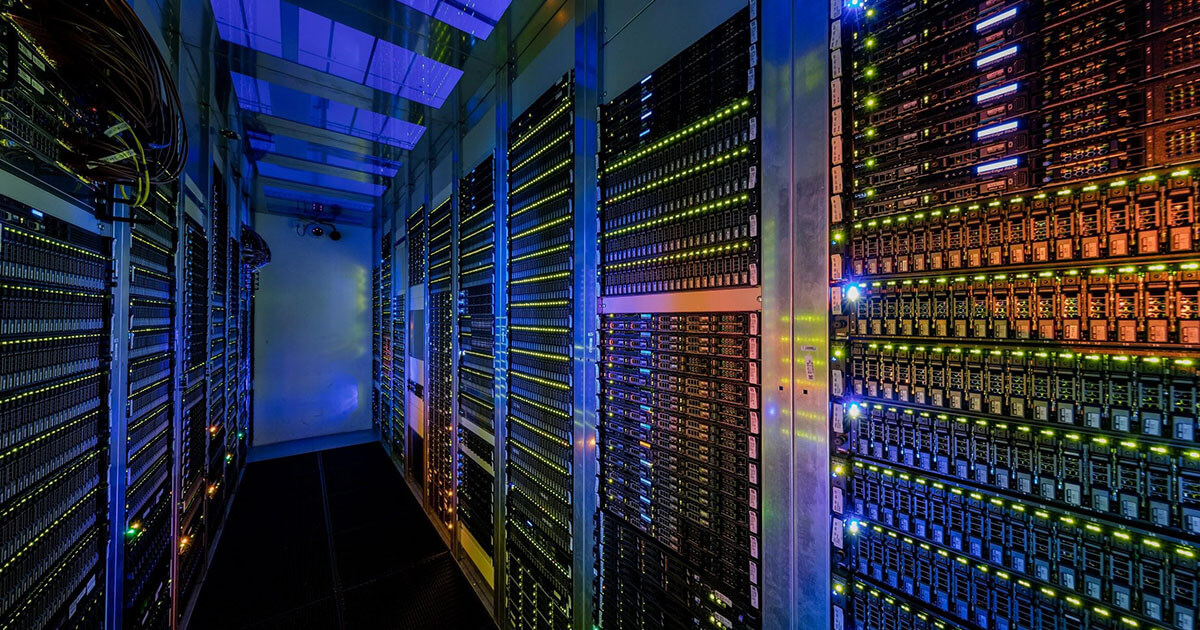Data center tiers
There are a number of nationally and internationally recognised standards for ensuring the quality, availability, and security of data centres. Among the most important standards are the Tier Classification Standard issued by the Uptime Institute, the Telecommunications Industry Association’s TIA-942 standard, DIN EN50600, and the recently introduced ISO/IEC 22237 standard. These data centre tier classification systems provide information about the centres’ fire safety, maintenance and uptime, among other things.
From your personal cloud with email and office apps to small businesses to international corporations — pretty much everyone relies on strong data centres, cloud computing, and software-defined data centres. The more connected our social and professional worlds become, the more important it is to ensure security in data centres, prevent server failures, and maintain the availability of system resources. That’s why there are official international standards and classifications that allow you to judge a data centre’s suitability for your business.
IONOS Cloud Compute Engine
Small and medium businesses choose Enterprise Cloud, the cloud made in Germany! Efficient and powerful cloud infrastructure, IaaS and PaaS for champions!
Overview of the standards and classifications
There are four systems commonly used to evaluate data centres:
- Uptime Institute’s Tier Classification System
- Telecommunications Industry Association’s TIA-942 standard
- DIN standards
- ISO/IEC standards
All of these systems provide a reliable basis for evaluating the planning, implementation, and launch of new data centres, as well as for optimising and developing the performance and security existing data centres.
Data centres are of critical importance for businesses. Not every company needs its own server sites. Check out our article ‘What is a data centre?’ to learn about the different types of data centres.
Uptime Institute’s Tier Classification System
Uptime Institute’s Tier Classification System is one of the most prominent standards and classifies data centres using a hierarchical system. The four tiers indicate where a data centre stands regarding uptime, security, and redundancy.
The levels touch on external factors like connectivity and the hierarchy of data centres in international networks, as well as internal factors like security measures and data centre downtime.
The system is progressive, meaning that each higher tier also includes the requirements of the tiers below it. Below we’ll look in detail at the requirements for each data centre tier.
Tier 1 data centres
- No redundancy
- Single path for power and cooling
- No fault tolerance, not concurrently maintainable
- Limited cooling capacity: 220-230 watts per square meter
- Expected 99.67% uptime (maximum 28.8 hours of downtime per year)
- Suited for: Small companies and start-ups with low budgets and limited IT requirements. Not used very often.
Tier 2 data centres
- Partial redundancy for cooling and power
- One path for power
- Low fault tolerance, not concurrently maintainable
- Simple cooling capacity: 430-540 watts per square meter
- Expected 99.75% uptime (maximum 22 hours of downtime per year)
- Suited for: Simple IT processes that require good performance but aren’t mission critical. Not used very often.
Tier 3 data centres
- Reliable redundancy for different components: two servers, multiple paths for cooling and power
- Good fault tolerance, concurrently maintainable
- Good cooling capacity: 1,070-1,620 watts per square meter
- Expected 99.98% uptime (maximum 1.6 hours of downtime per year)
- Suited for: Recommended minimum level for businesses with high standards for seamless IT processes, e-commerce, and mission-critical processes.
Tier 4 data centres
- Complete redundancy for all parts of the system, including power and cooling
- Very high fault tolerance, no single points of failure
- Very good cooling capacity: over 1,620 watts per square meter
- Expected 99.991% uptime (maximum .8 hours of downtime per year)
- Suited for: Large companies with internationally connected computing networks, 24/7 system availability, and highly mission-critical IT processes
Need a reliable and high-performance frontend with transparent pricing and flexible business cloud infrastructure? Then check out IONOS’s Cloud Compute Engine and benefit from expert help and a setup that fits your needs.
Telecommunications Industry Association’s TIA-942 standard
The TIA-942 standard is another data centre classification system that’s frequently used in the US. However, it can be a useful guide for companies internationally. Released in 2005, it was among the first standards specifically geared towards data centres. It covers site selection and layout of the space, cabling infrastructure, and environmental considerations and includes a tiered reliability system based on Uptime’s. The standard is particularly relevant to the design and implementation of new data centres.
International standards: ISO/IEC 22237 and DIN EN 50600
There are also international standards like DIN EN 50600 and ISO/IEC 22237. The DIN EN 50600 is a European standard that primarily focusses on physical security in data centres. The ISO/IEC 22237 was recently introduced by the International Organization for Standardization (ISO) and International Electrotechnical Commission (IEC) and borrows heavily from the DIN EN 50600. It’s valid internationally and is expected to replace Uptime’s tier classification for data centres as well as DIN EN 50600.
Secure your data with a cloud backup with IONOS — including automatic backups, protection for servers and devices, and anti-ransomware.
What’s covered in the ISO/IEC 22237?
The ISO/IEC 22237 adopts the most important points from the DIN EN 50600 and expands on them using recent findings on sustainability and energy efficiency. It also integrates a four-tiered system for classifying quality and uptime. It’s thus not only a valuable tool for developers and planners but also a way to build trust with investors and end users. The standard consists of seven main points:
- ISO/IEC 22237-1 (EN 50600-1): General concepts
- ISO/IEC TS 22237-2 (EN 50600-1): Building construction
- ISO/IEC 22237-3 (EN 50600-2): Power distribution
- ISO/IEC 22237-4 (EN 50600-3): Environmental control
- ISO/IEC TS 22237-5 (EN 50600-4): Telecommunications cabling infrastructure
- ISO/IEC TS 22237-6 (EN 50600-5): Security systems
- ISO/IEC TS 22237-7 (EN 50600-3-1): Management and operational information
With a cloud server from IONOS, you’ll benefit from high-performance scalability, dedicated resources, and great pricing packages.
Is quality testing mandatory for data centres?
Standards, tiers, and certifications are not mandatory — data centres participate voluntarily in them. There are also independent organisations that review data centres’ compliance with standards. This makes it even more important for investors, consumers, and end users to look out for a transparent indication of which tier a data centre belongs to. It’s also in the interest of those running data centres to increase their credibility with standards and certifications.





